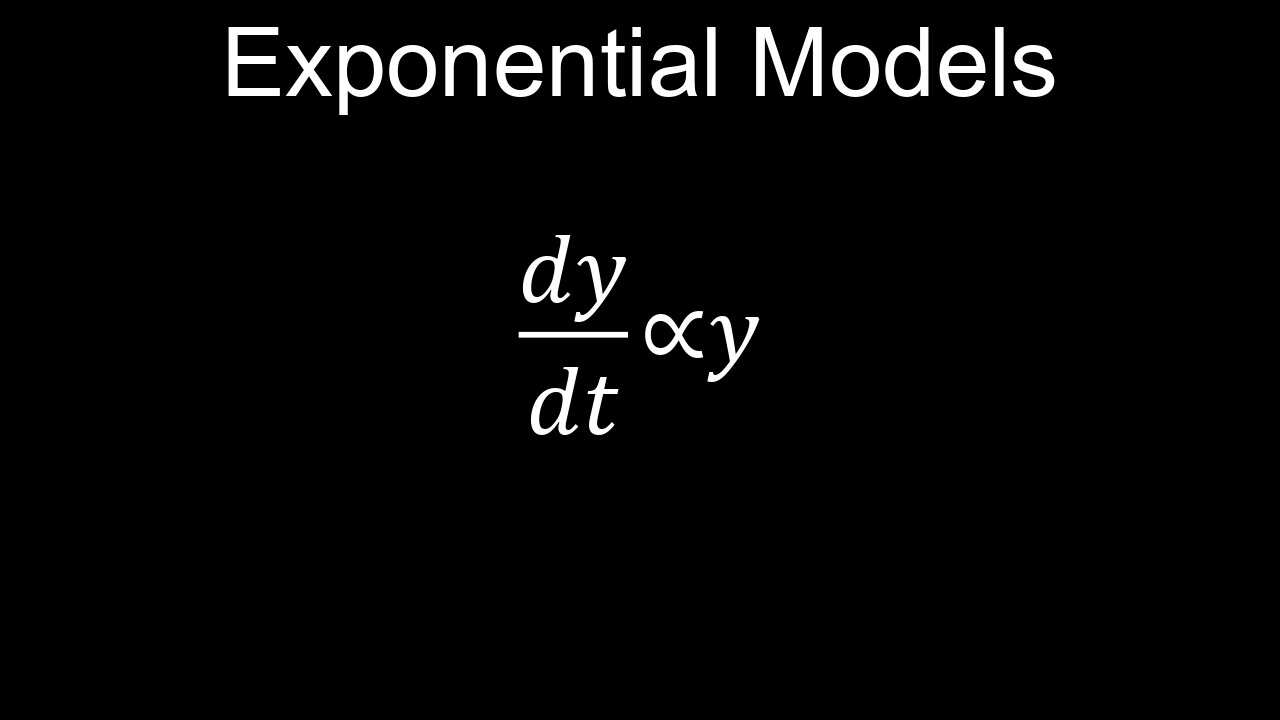Premium Only Content

Exponential Models with Differential Equations, Population Growth, Examples - Calculus
Exponential models describe quantities that change at a rate proportional to their current value, which is captured by the differential equation dy/dt = ky. The solution to this equation is y(t) = y(0)e^(kt), where 'y(t)' is the quantity at time 't', 'y(0)' is the initial quantity, 'k' is the constant of proportionality, and 'e' is the base of the natural logarithm. If 'k' is positive, the model represents exponential growth; if 'k' is negative, it represents exponential decay.
💡How it works
• The Differential Equation: The core idea is that the rate of change of a quantity (dy/dt) is directly proportional to the quantity itself (y), with 'k' as the constant of proportionality.
• The Solution (Exponential Model): By solving this separable differential equation, we arrive at the formula for exponential growth or decay:
⚬ y(t) = y(0)e^(kt)
⚬ y(t): The amount of the quantity at time 't'.
⚬ y(0): The initial amount of the quantity at time 't' = 0.
⚬ k: The growth or decay constant.
⚬ e: The base of the natural logarithm, approximately 2.71828.
💡Applications
This relationship is widely applied in various fields:
• Population Growth: The rate at which a population grows is often proportional to its current size.
• Radioactive Decay: The rate at which a radioactive substance decays is proportional to the amount of the substance remaining.
• Finance: Continuously compounded interest follows an exponential model, where the growth of money is proportional to the amount present.
• Medicine: The elimination of a drug from the bloodstream can often be modeled using exponential decay.
💡Interpreting the constant 'k'
• Positive 'k': Indicates exponential growth, where the quantity increases at an accelerating rate.
• Negative 'k': Indicates exponential decay, where the quantity decreases at a rate proportional to its current value.
💡Worksheets are provided in PDF format to further improve your understanding:
• Questions Worksheet: https://drive.google.com/file/d/1DMK4EA0f8SfF4SgdiOZ39F73He_YWIwe/view?usp=drive_link
• Answers: https://drive.google.com/file/d/1QpzjiCPjfoxydzZqvjyJJsqv9jyRLZ0o/view?usp=drive_link
💡Chapters:
00:00 Exponential models, growth and decay
01:40 Worked examples
🔔Don’t forget to Like, Share & Subscribe for more easy-to-follow Calculus tutorials.
🔔Subscribe: https://rumble.com/user/drofeng
_______________________
⏩Playlist Link: https://rumble.com/playlists/Ptm8YeEDb_g
_______________________
💥 Follow us on Social Media 💥
🎵TikTok: https://www.tiktok.com/@drofeng?lang=en
𝕏: https://x.com/DrOfEng
🥊: https://youtube.com/@drofeng
-
 9:03
9:03
MattMorseTV
18 hours ago $70.10 earnedTrump’s America First CALL TO ACTION.
82.8K103 -
 2:18:38
2:18:38
Side Scrollers Podcast
22 hours agoGTA 6 GETS WRECKED AFTER ANOTHER DELAY + India THREATENS YouTuber Over Video + More | Side Scrollers
134K16 -
 18:03
18:03
Nikko Ortiz
1 day agoEBT Meltdowns Are Insane...
27.5K58 -
 17:33
17:33
a12cat34dog
1 day agoRUMBLE TAKEOVER @ DREAMHACK | VLOG | {HALLOWEEN 2025}
56.5K25 -
 10:48
10:48
GritsGG
18 hours agoWarzone Stadium Easter Egg! Unlock Grau Blueprint EASY!
32.1K2 -
 LIVE
LIVE
Lofi Girl
3 years agolofi hip hop radio 📚 - beats to relax/study to
486 watching -
 1:43:54
1:43:54
TruthStream with Joe and Scott
3 days agoStuey and Elisa V interview Joe and Scott Q, AI, Glutathione, Tylenol etc 11/5 #510
30.6K6 -
 29:15
29:15
BlabberingCollector
2 days agoHarry Potter X Fortnite, Fans Reee Over Trans Rights, NEW Audiobooks Are OUT, Wizarding Quick Hits
42.5K4 -
 1:20:42
1:20:42
The Connect: With Johnny Mitchell
6 days ago $24.12 earnedThe Truth Behind The U.S. Invasion Of Venezuela: Ed Calderon Exposes American Regime Change Secrets
56.8K33 -
 2:10:18
2:10:18
FreshandFit
10 hours agoAfter Hours w/ Girls
147K51